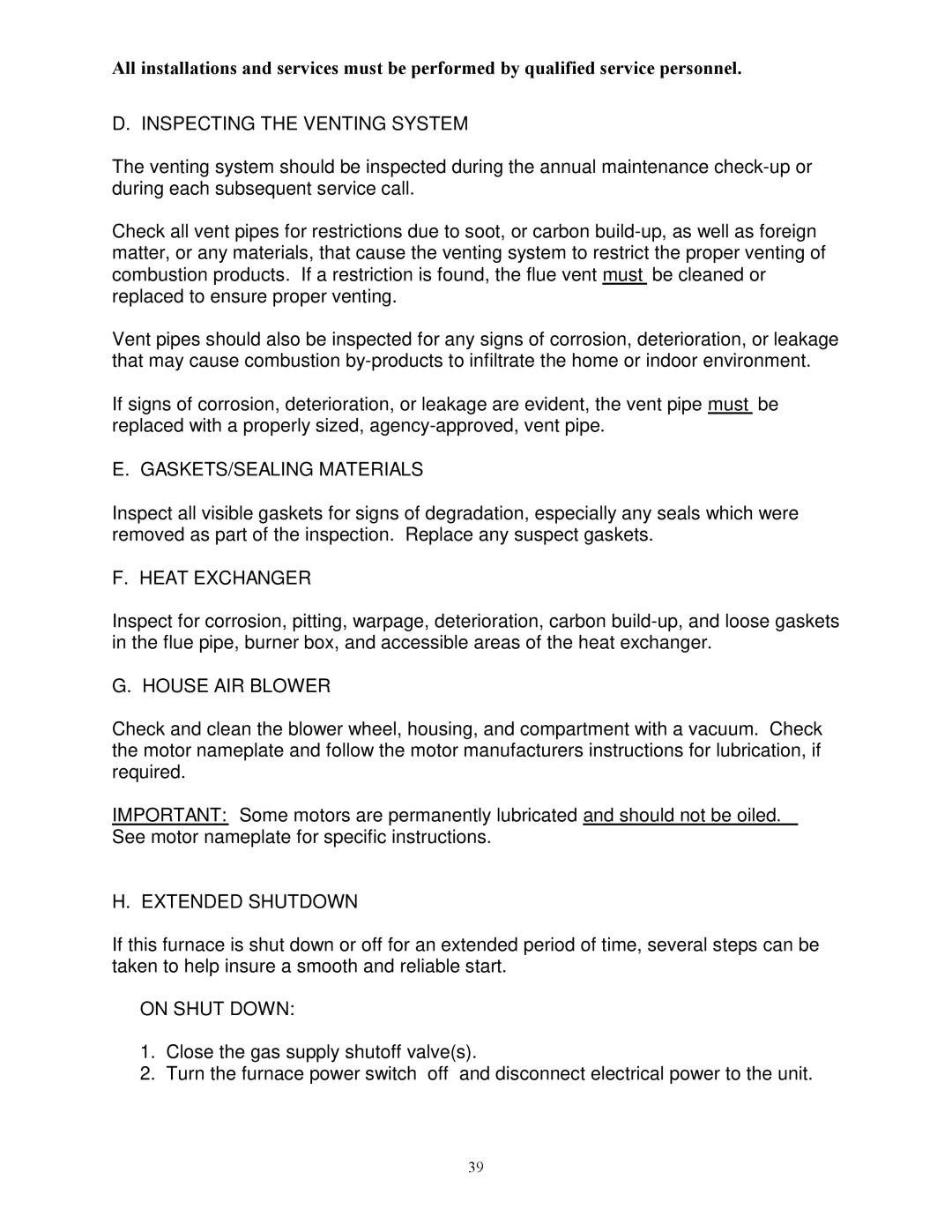All installations and services must be performed by qualified service personnel.
D. INSPECTING THE VENTING SYSTEM
The venting system should be inspected during the annual maintenance
Check all vent pipes for restrictions due to soot, or carbon
Vent pipes should also be inspected for any signs of corrosion, deterioration, or leakage that may cause combustion
If signs of corrosion, deterioration, or leakage are evident, the vent pipe must be replaced with a properly sized,
E. GASKETS/SEALING MATERIALS
Inspect all visible gaskets for signs of degradation, especially any seals which were removed as part of the inspection. Replace any suspect gaskets.
F. HEAT EXCHANGER
Inspect for corrosion, pitting, warpage, deterioration, carbon
G. HOUSE AIR BLOWER
Check and clean the blower wheel, housing, and compartment with a vacuum. Check the motor nameplate and follow the motor manufacturers instructions for lubrication, if required.
IMPORTANT: Some motors are permanently lubricated and should not be oiled. See motor nameplate for specific instructions.
H. EXTENDED SHUTDOWN
If this furnace is shut down or off for an extended period of time, several steps can be taken to help insure a smooth and reliable start.
ON SHUT DOWN:
1.Close the gas supply shutoff valve(s).
2.Turn the furnace power switch “off” and disconnect electrical power to the unit.
39
